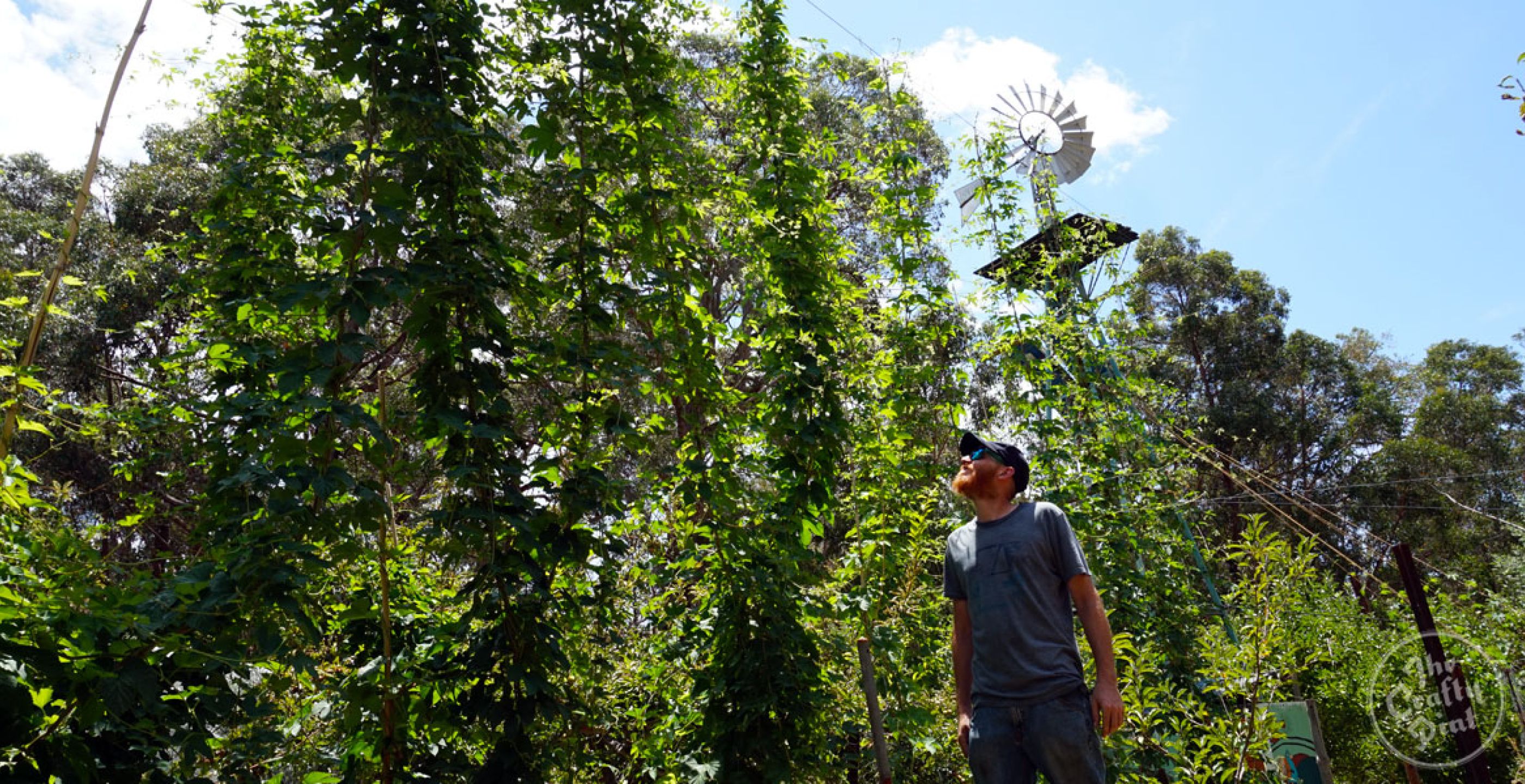With ever more breweries popping up all over Australia, hops have become an increasingly sought after commodity. A steady supply of these little green flowers (or their processed forms) that contribute aroma, flavour and bitterness to beer is crucial for brewers; without their chosen varieties it's hard, if not impossible, to maintain supply and consistency from batch to batch. Yet hop shortages are becoming increasingly common, both here and in hop growing regions overseas, particularly the US.
Each year certain varieties sell out or become difficult to obtain, particularly for smaller brewers whose orders may not be as regular or significant as their larger brethren. Such shortages can force brewers to alter their recipes slightly, or in some cases reluctantly raise their beer prices to reflect an increase cost for ingredients. In others, where a particular hop is crucial to a beer, they may have to stop brewing a beer altogether, at least temporarily.
It’s a situation that’s only like to worsen this year. Ten days ago, the country’s major grower, Hop Products Australia, announced that savage weather had badly affected its farm in the Victorian High Country meaning yields for the 2016 harvest could be down as much as 40 percent (see below for more detail).
Into such a climate steps Stuart Binnion with plans to grow and distribute hops from his small four acre farm in Longwood, South Australia. While his operation remains very small – he only bought the property in July 2015 – he has big plans for further expansion.
With no less than eight natural springs on his land, Stuart says straight away he saw the potential to grow hops on a commercial level. In doing so, he joins a growing band of farmers globally entering the hop industry.
But why the Adelaide Hills? Let's wind the clock back to the late 19th century, when the first hop farms flourished in the Adelaide Hills. Such hop farms existed just down the road from his farm in the tiny suburb of Mylor, on the Onkaparinga River. The owner grew hops for a total of 21 years and only decided to cease operations in 1913 just before the First World War.
Mylor and Longwood are not the only suburbs that have the right conditions to grow hops in the hills either, as the Lobethal area was also known to grow them.
“[Hop growing] just disappeared 100 years ago and no one has bothered to try again,” says Stuart.
 With drying racks awaiting his first harvest, the initial aim for Stuart’s hop company (named Fresh Hops Co-op), is to provide local microbreweries and home brewers with the freshest product possible.
With drying racks awaiting his first harvest, the initial aim for Stuart’s hop company (named Fresh Hops Co-op), is to provide local microbreweries and home brewers with the freshest product possible.
Beyond that he plans to sell his rhizomes, rhizome cuttings and dwarf plants throughout the state, from which others can try to grow their own plants, while opening a network for anyone wanting to grow the one of beer’s four main ingredients that Aussie beer drinkers seemingly can’t get enough of.
Stuart’s background and passion lies in the field of horticulture. He says that growing most things is simple: all you need are the correct weather conditions and the appropriate infrastructure in place.
But, when trying to further his knowledge on how to grow hops, he admits he ran into a bit of trouble as he couldn’t find any modern literature or videos.
“I ended up watching an old German video about how to set up the wiring,” he says.
To date two varieties have flourished in the South Australian conditions: US variety Columbus and British hop Goldings. Stuart believes that these two types have taken off due to the rhizomes coming from an area with a similar soil composition and growing conditions.
However, already there have been some challenges, such as large temperature fluctuations throughout South Australia’s summer as well as rigging infrastructure high enough to support the hop bines, which grow to several metres in height. Indeed, Stuart admits that the first year is something of an experiment and, if successful, will see the hop farm spread to other parts of his property.
With the craft beer industry growing apace, many spin off businesses are rising in tandem: craft maltings, for example, or a growing demand for oak barrels and, with it, the need for coopers to make or repair them. Then there are the many brewers who cultivate small hop crops for some of their beers and others, like Stuart, who are looking to develop experimental hop farms too.
As for the first Fresh Hops Co-op crop, Stuart expects to be harvesting his Columbus and Goldings in early February. All being well, there will be beers brewed with them to report on soon afterwards.
Do you know of similar businesses in Australia, farming or otherwise, that have grown up around the burgeoning craft beer industry? If so, drop us a line at crafty@craftypint.com.
About the author: You can follow Matt King on all social media platforms, including via his blog The Craft Beer King, or by following the CraftyPintSA Twitter account.
Victoria's High Country hops hit by severe weather
Australia's biggest hop grower, Hop Products Australia, has warned that its crop from Rostrevor in the Victorian High Country could be down by as much as 40 percent this year after the farm was hit by severe weather at the end of 2015.
The main varieties affected are Galaxy, Vic Secret, Ella and Topaz although in a statement HPA said the true impact will not be known until harvest 2016 is completed at the end of March.
The damage was caused on December 8 when two storm cells collided close to Rostrevor Hop Gardens (pictured above) in the Ovens Valley. They experienced 65mm of rain and hail in just 15 minutes accompanied by strong gusts of wind that significantly damaged the southern half of the farm and resulted in many plants losing their growing tips.
Since then, HPA has invested thousands of hours in re-training lateral arms to re-establish apical growing tips, essential for progressing proper growth stages in the plants. However, while some bines recovered quite well, others failed to grow any higher than approximately half their normal height.
Accordingly, HPA says in its statement that it "will endeavour to honour contracts in full where possible but it is now a realistic expectation that there will be a significant shortfall against expectations."
Managing director Tim Lord said: “Unfortunately, like any agribusiness, we’re at the mercy of Mother Nature and this year she came down hard on us. However, our team will be working closely with brewers to manage any shortfalls that may occur and discuss substitution options as the need arises.”
The construction of HPA’s new harvest facility at Rostrevor – which we wrote about here – is progressing as scheduled and the
planting of the new hop gardens planned for this season have been completed.
Production expansion plans are on track and the outlook for crop 2017 and beyond remains unchanged.

















